Presets
Imposition Wizard saves the current layout on exit, so when you start it the next time you get the same settings back. This is convenient, but you most likely need more than a single layout and this is what presets are used for.
Preset is an imposition layout saved for re–using in the future. You can see the presets by clicking Presets button at the bottom right corner of the application window:
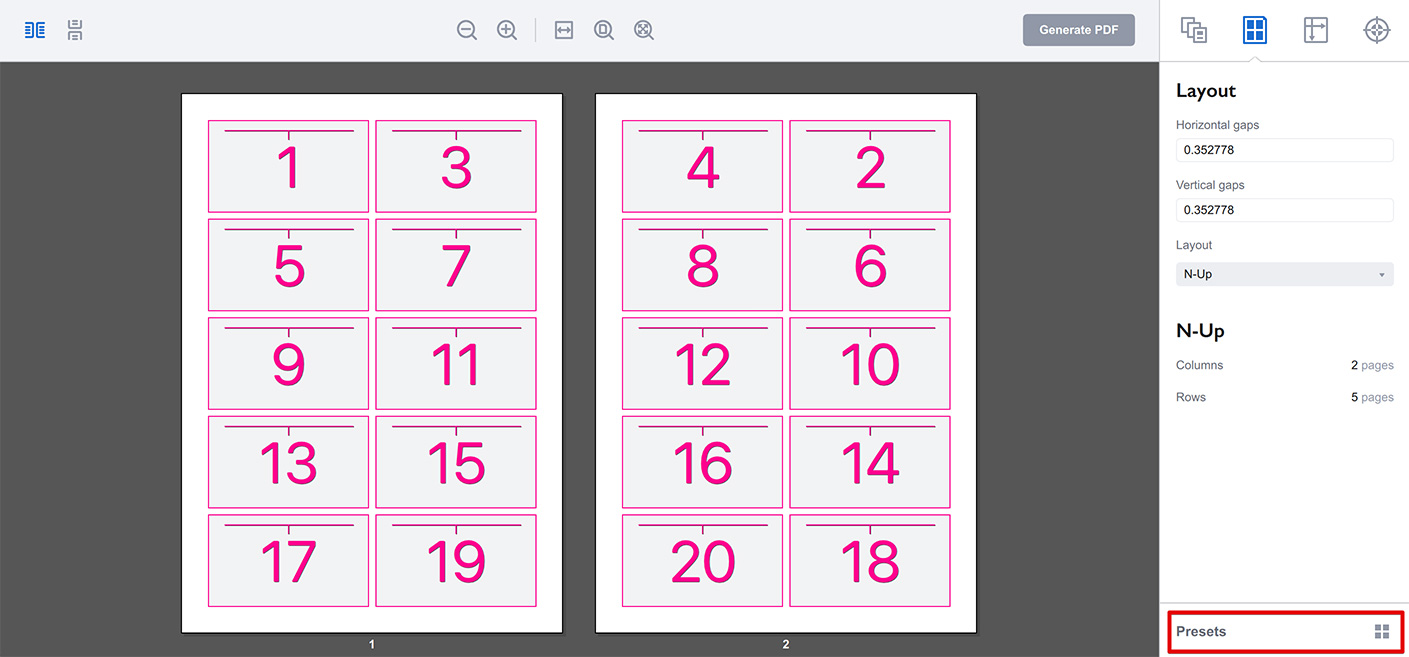
Another way to see the presets is to use File → Presets… menu item. When you click the button or use the menu item, you will see the presets list:
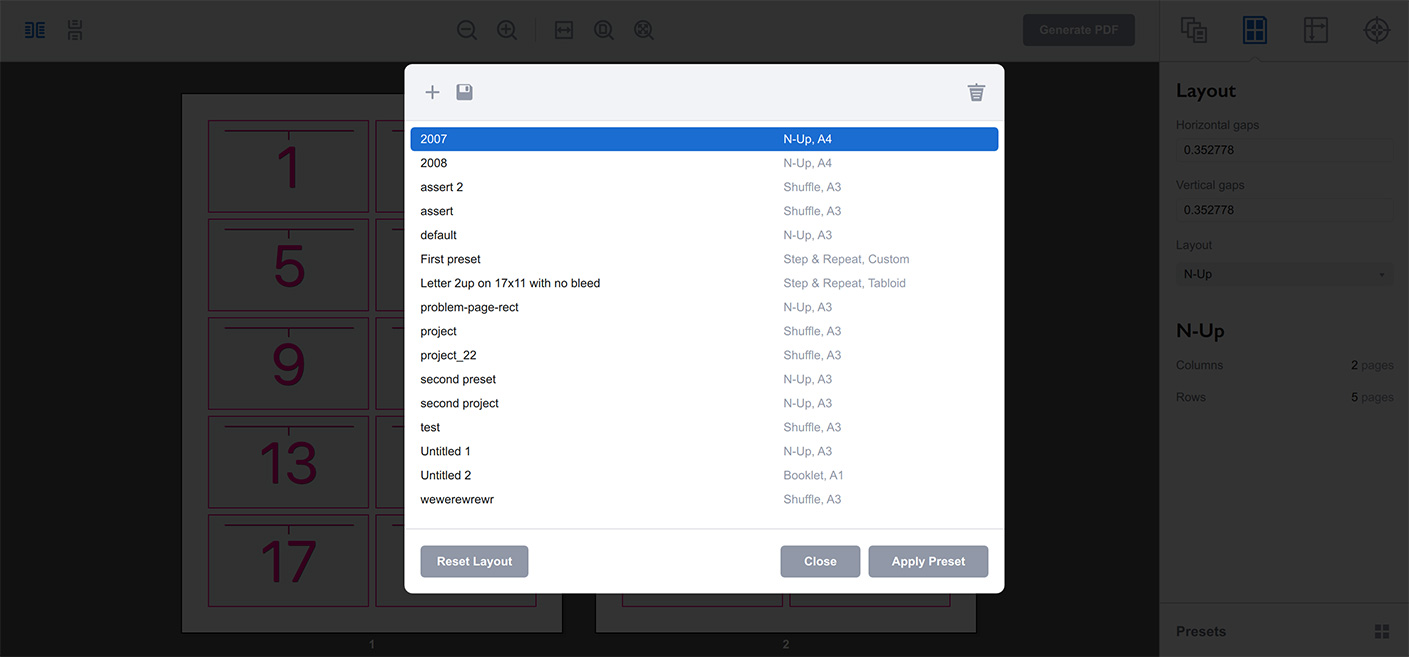
Here you can load, save, update or delete presets and also reset the current layout to defaults.
Making a New Preset
To save the current layout as a preset, open the presets list and click the plus button at the top left corner of the list:
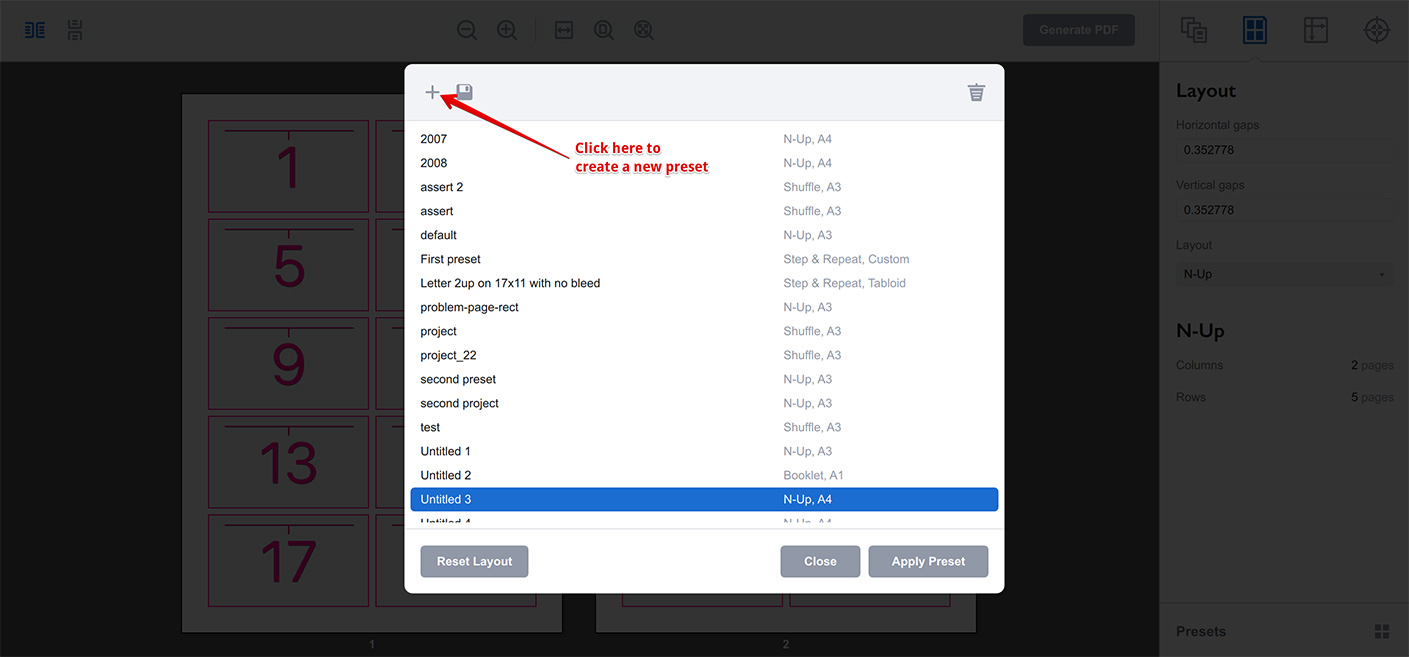
Imposition Wizard will make a new preset with the current layout and let you name it.
Loading Presets
Presets loading is pretty much straightforward: you open the presets list, select the preset you need and click Apply preset. Or you can simply double–click the preset.
Applying a preset changes your current layout and exactly as with manual parameters changing, this can be rolled back with Edit → Undo menu item.
Note that preset is not a project, Imposition Wizard doesn’t track which preset is currently active. You simply make changes to your layout either manually one parameter after another, or by using a preset. Any changes you make after applying a preset will not affect the preset itself, only the current layout.
Updating Presets
To update the preset with the current layout, you need to open the presets list, select the preset and click the Save icon at the top left corner of the list:
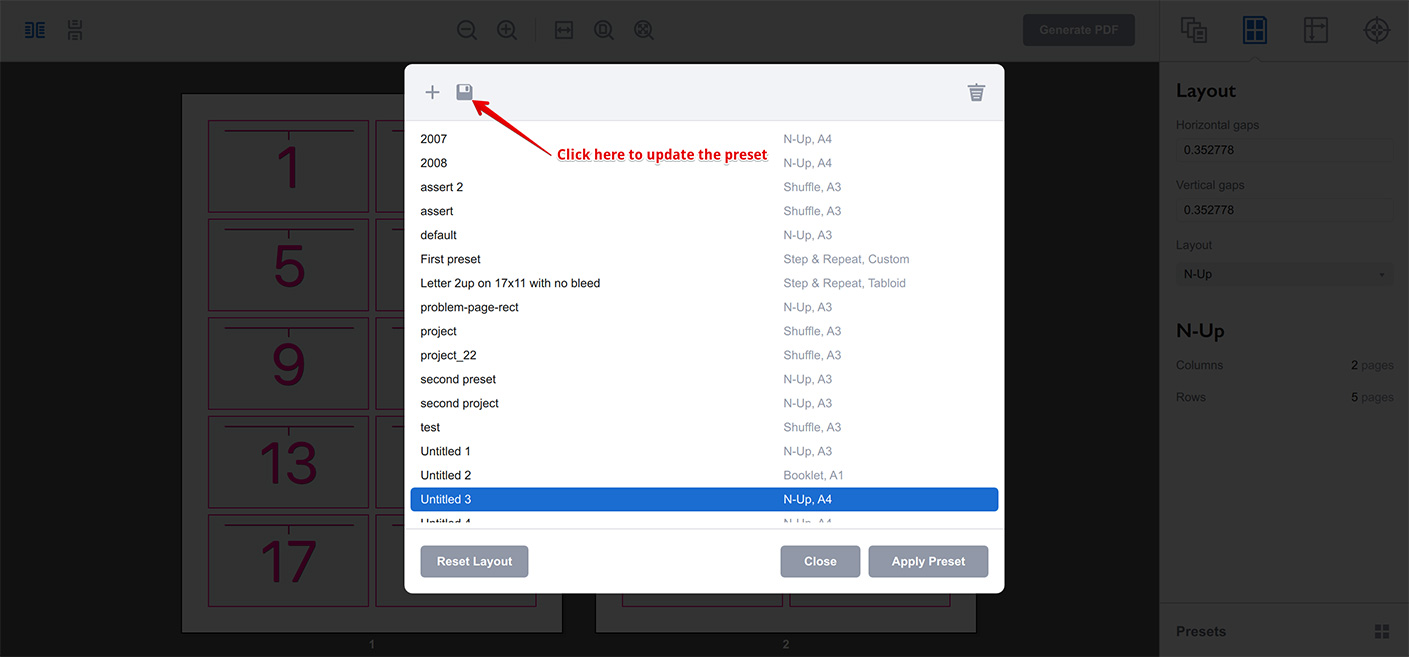
Imposition Wizard will save the current layout to the selected preset, so you can re–use it later. Note that this cannot be undone, the old preset parameters are overwritten with the new values.
Filtering Presets
When the presets list is displayed you can start typing text and Imposition Wizard will only show the presets that have that text in their names. This way you can narrow down the list for easier finding the right one.
You can also switch to the filtering mode by pressing Control–F (or Command–F on Mac) keyboard shortcut. Press Down key to jump to the list, or press Escape to cancel the filtering mode.
Other Options
Two more buttons in the presets list let you delete the selected preset and reset the layout to defaults:
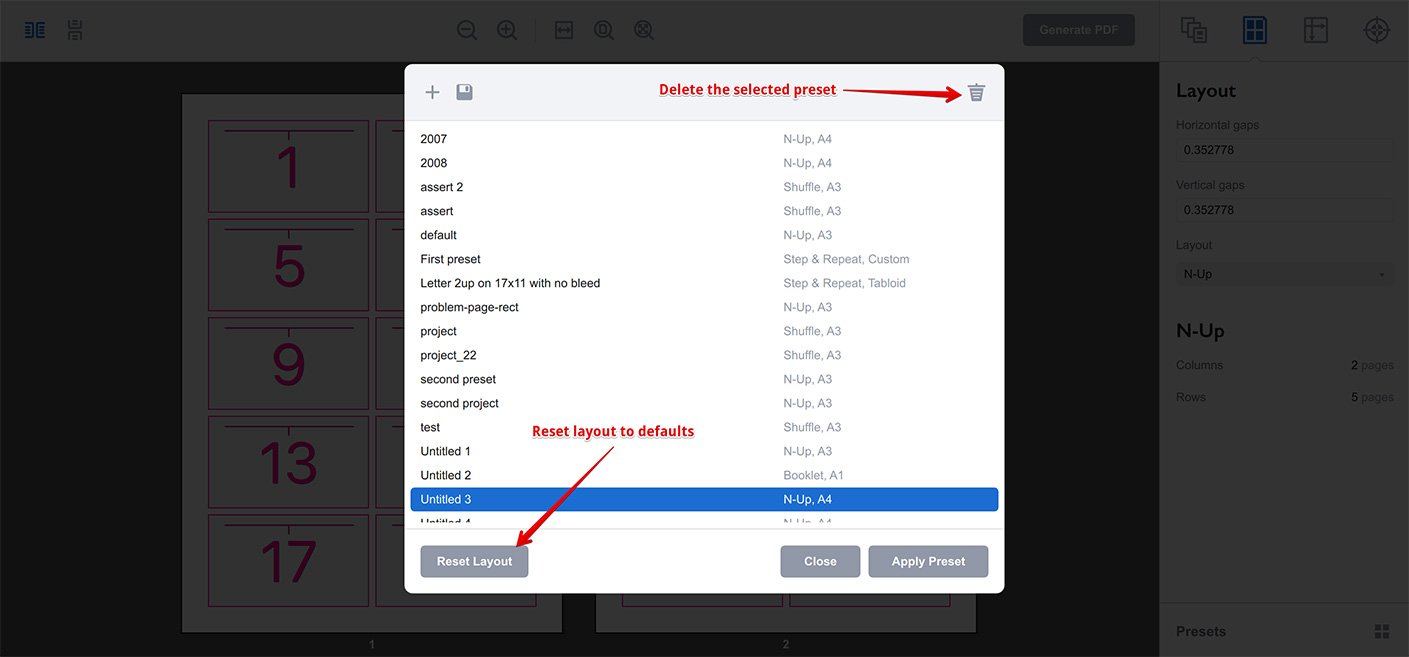
Resetting the layout is useful when you need to start from scratch. Exactly as with presets loading, this operation can be rolled back with Edit → Undo menu item. It also doesn’t change the last preset you activated — it only affects the current layout. If you want to make changes to a preset, you need to update it using the method shown above.
You can rename presets by right–clicking them and selecting Rename item from the pop–up menu.
Locating Presets on Disk
Sometimes you may want to access presets files directly — for instance to copy them to another computer, or to make a backup. In order to do so, right–click a preset and select Reveal in Finder/Explorer menu item. This will pop up a folder with all the presets where you can manage the files the way you need.
Another way to locate the presets is to use File → Useful Folders → Presets menu item.
Imposition Wizard tracks changes made in that folder and updates the presets list accordingly.
Importing and Exporting Presets
You can arrange presets the way you need using the import and export options available in the file menu.
Click File → Export Preset.. in the menu and select the location to save the current preset outside of the standard presets list. This way you can group them into folders and subfolders, exactly the way you need.
If you need that preset later you can click File → Import Preset… in the menu and select one of the preset files you saved earlier. The preset will be applied once you import it.
You can also drag and drop the preset file into Imposition Wizard and it will also be applied.
Note, that the presets exported this way are not show in the main presets list described above. Basically, consider using this feature if the standard presets list is not enough for you.
More Imposition Wizard Tutorials
Installation
- Installation — how to install Imposition Wizard;
- License Activation — how to activate Imposition Wizard with a license key;
- Acrobat Plugin Problems — what to do if the plugin doesn’t work.
Basics
- User Interface — how to run Imposition Wizard and make the first steps;
- Pages Grid — how pages are placed across the sheets in Imposition Wizard;
- Presets — how to save and re–use imposition layouts.
Layouts
- N–Up — a very simple, yet customizable layout;
- Step and Repeat — perfect layout for business cards;
- Cut Stack — flexible layout with pages flow options;
- Booklet — lots of options for fine–tuning the imposition process;
- Shuffle — manual imposition mode where you control the flow;
- Dutch Cut — save paper by printing more pages on the same sheet.
Imposition Parameters
- Source Panel — overriding trim box and bleeds, pages scaling;
- Page Gaps — configuring gaps between pages;
- Sheet Panel — output sheet size, content position and more;
- Duplex Printing — duplex printing support;
- Registration Marks — adding and configuring marks, custom texts etc;
- Flipping Rules — how to flip pages in most layouts.
Registration Marks
- Angle Mark — angle mark for image drift compensation;
- Barcode — encoding job details with barcodes;
- Bull Eye — placing bull eye marks around the pages;
- Color Bar — adding color bars to imposed files;
- Crop Marks — configuring crop marks for easier trimming;
- Custom Mark — adding ad–hoc graphics where needed;
- Custom Text — adding text elements with imposition details;
- Gap Crop Marks — adding crop marks in the middle of the page gaps;
- Folding Marks — marking the middle of booklet spreads;
- Star Target — placing star target marks around the pages;
- Trim Line — marking page boundaries to simplify trimming;
Automation
- Batch Processing — impose multiple files at once;
- Hot Folders — monitor folders and run imposition on changes.
Command Line
- Basic Imposition — basic command line imposition example.